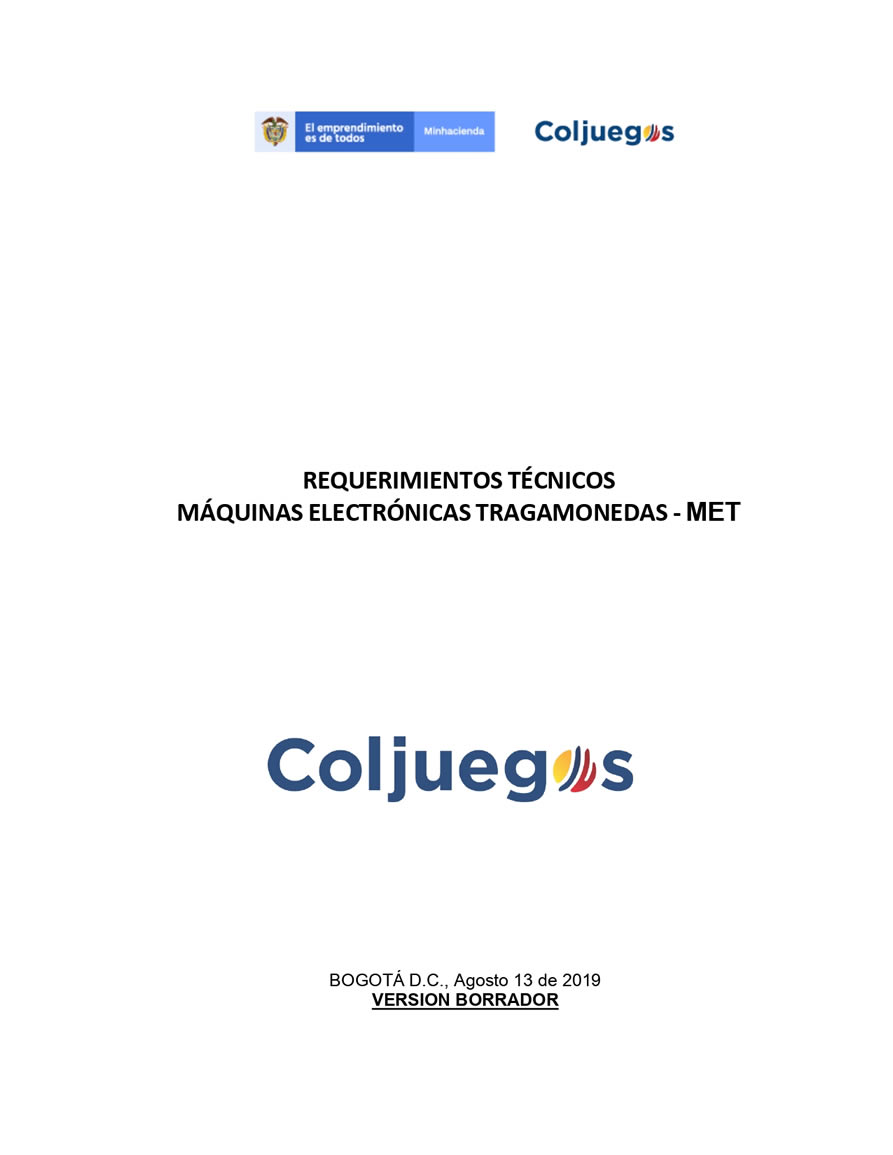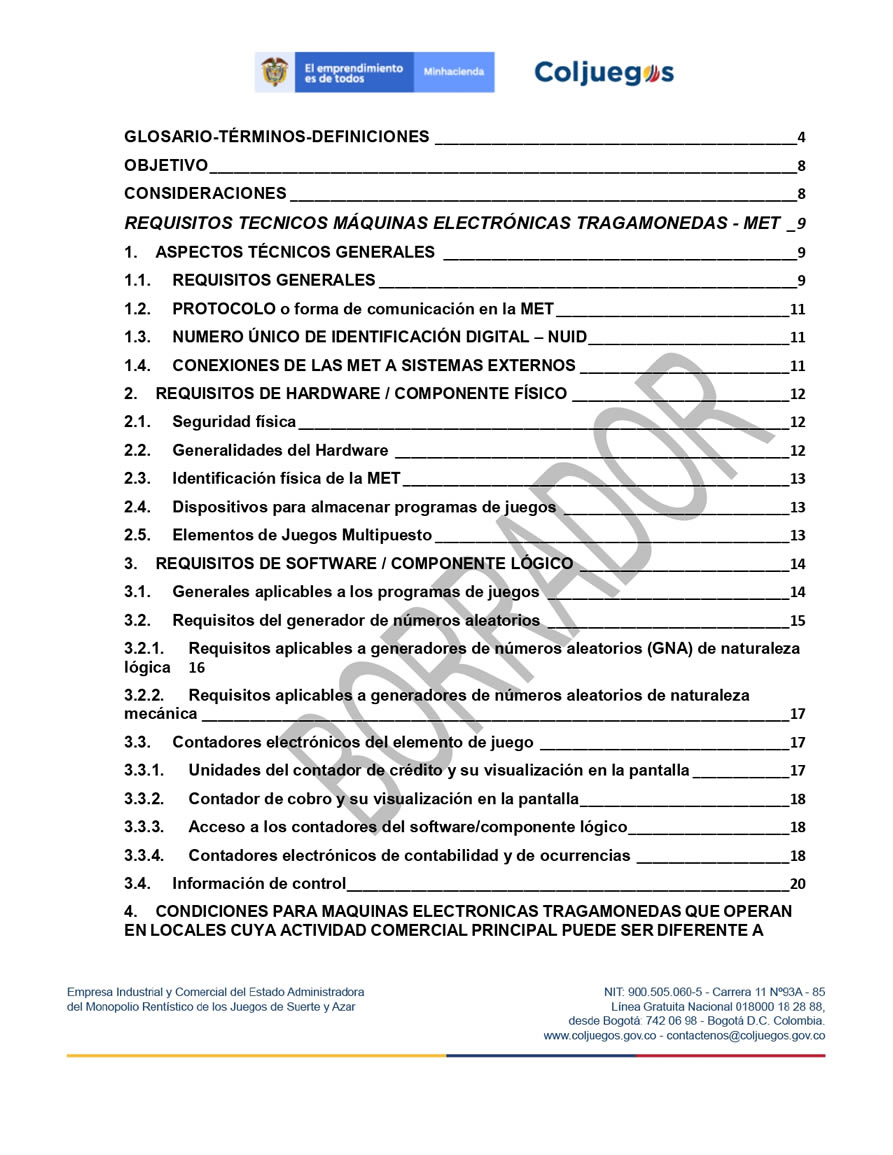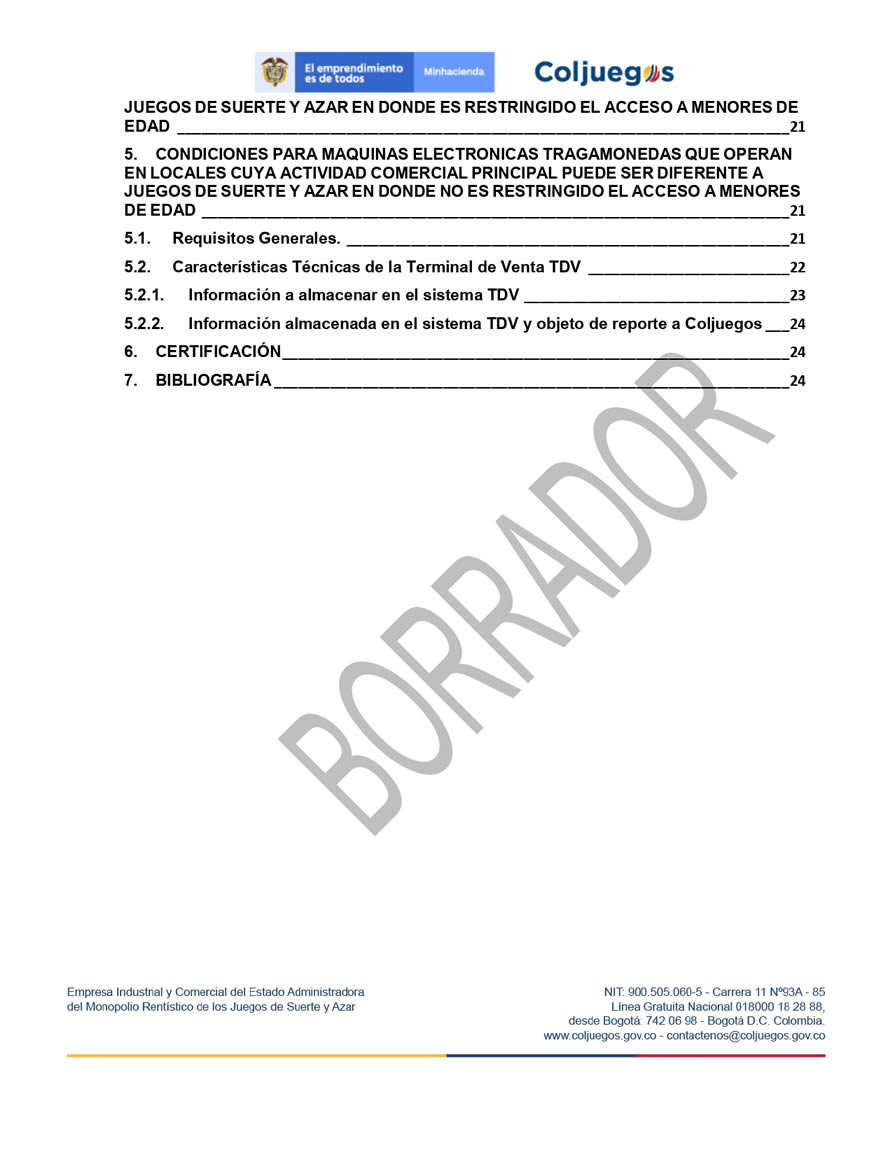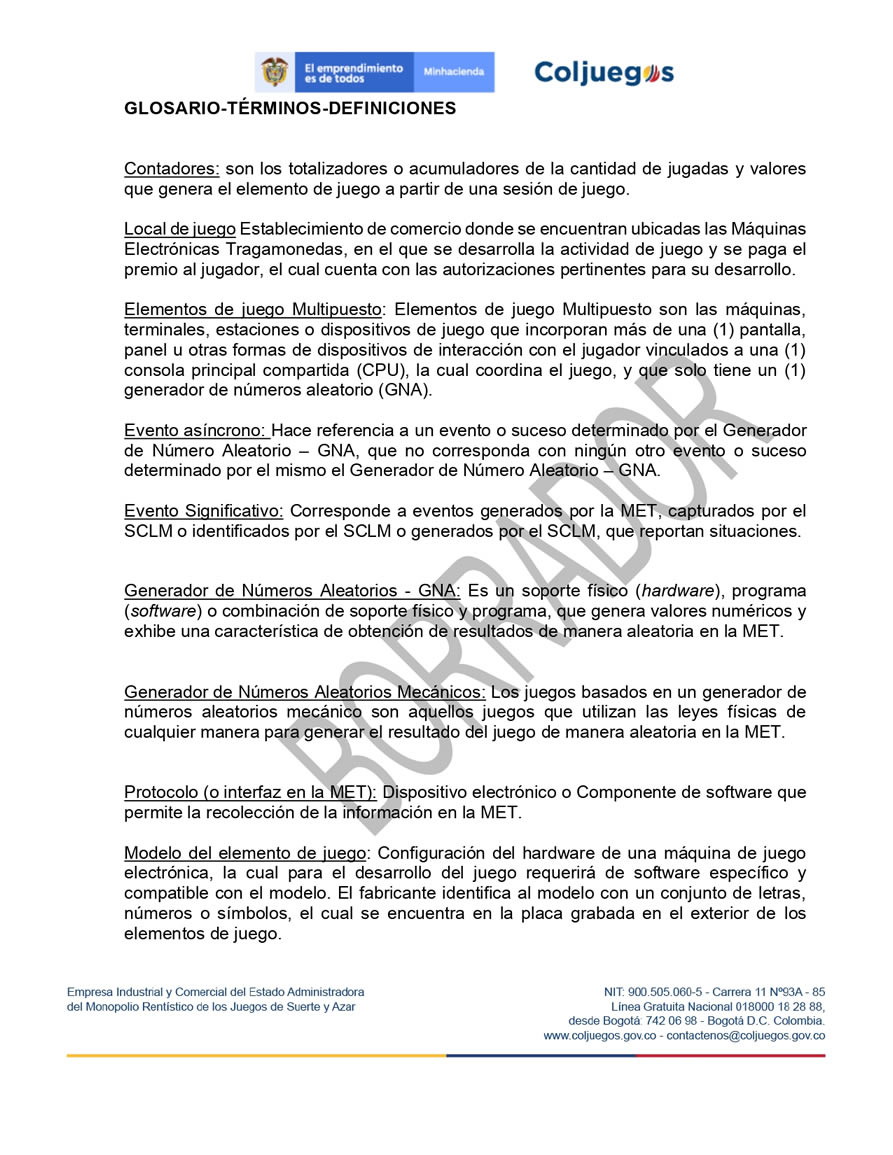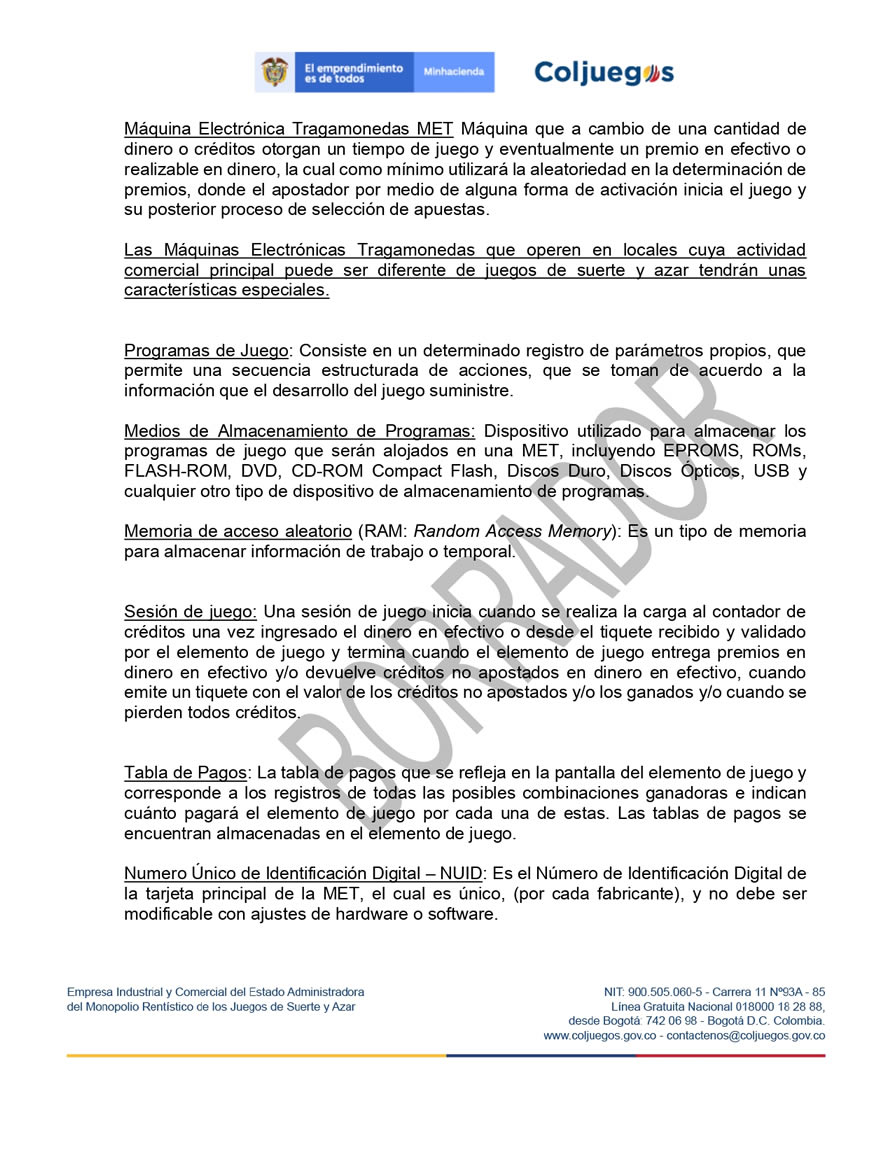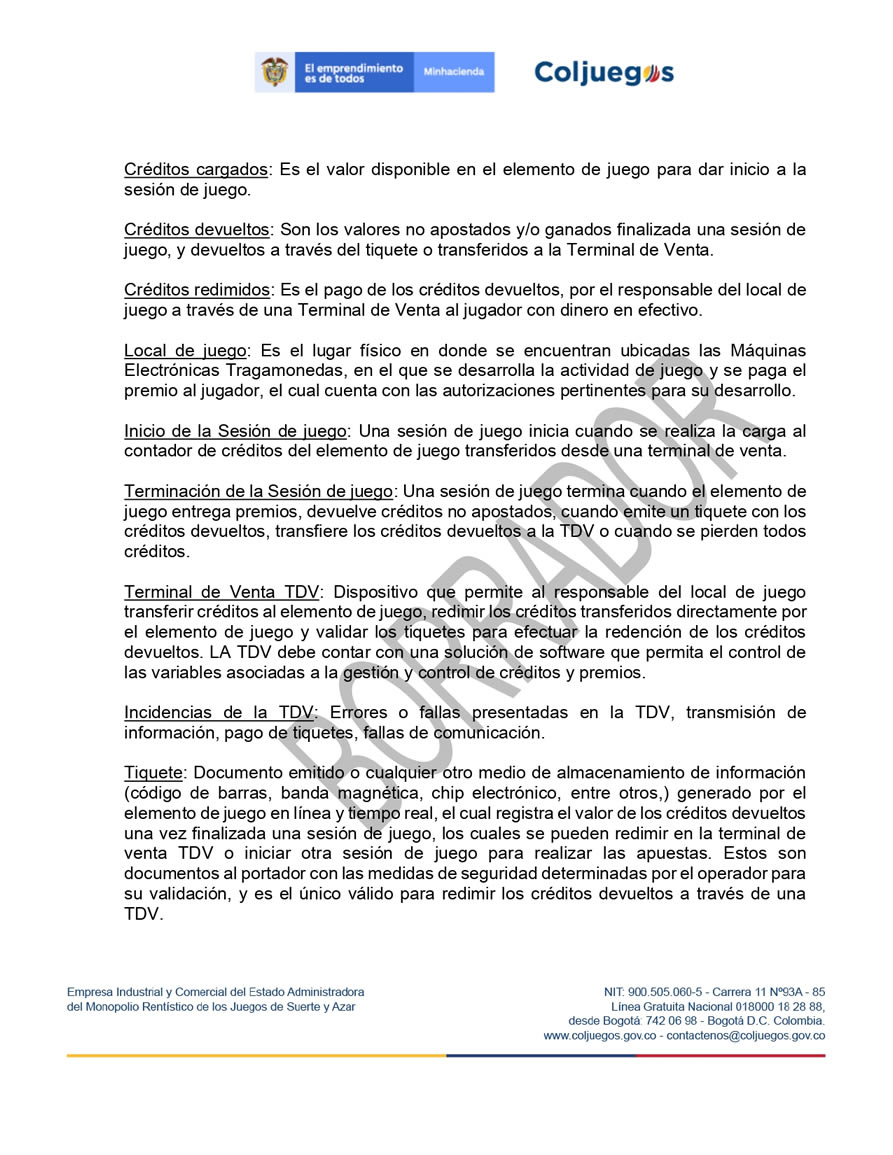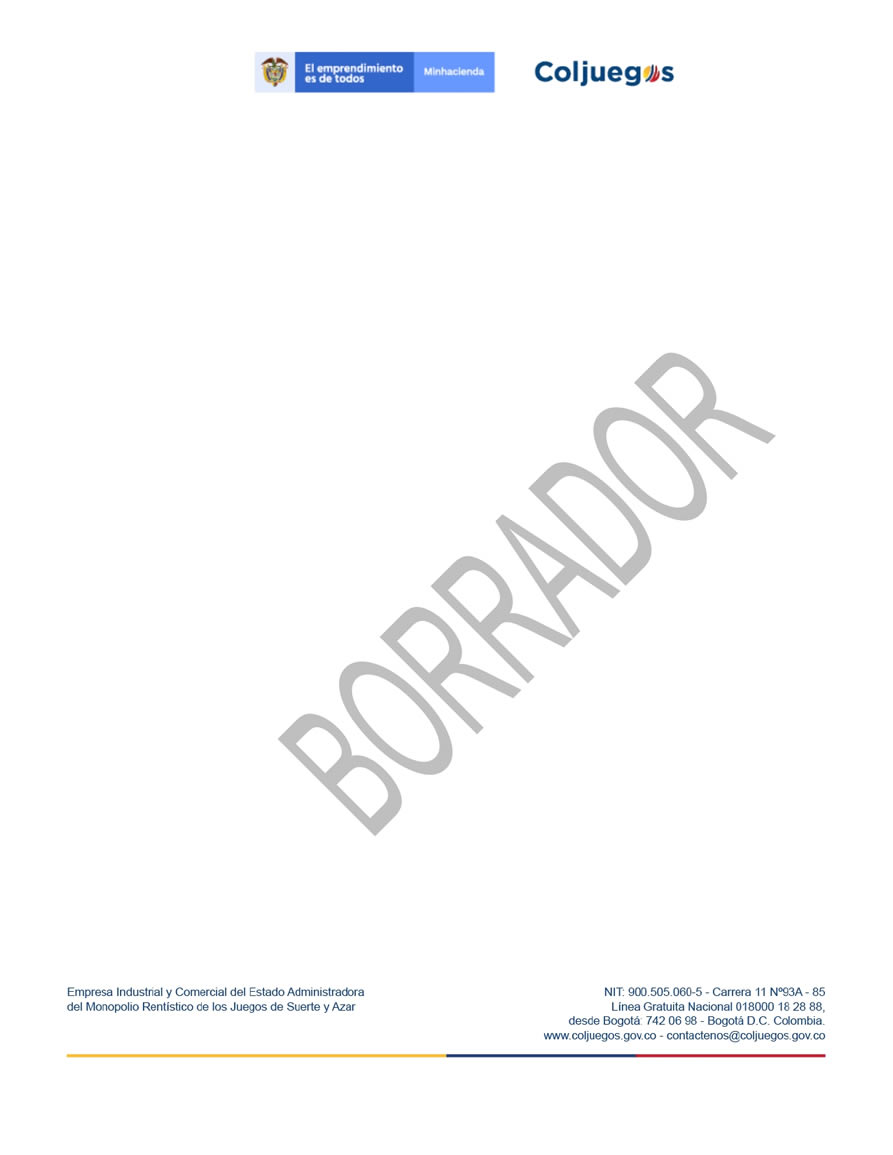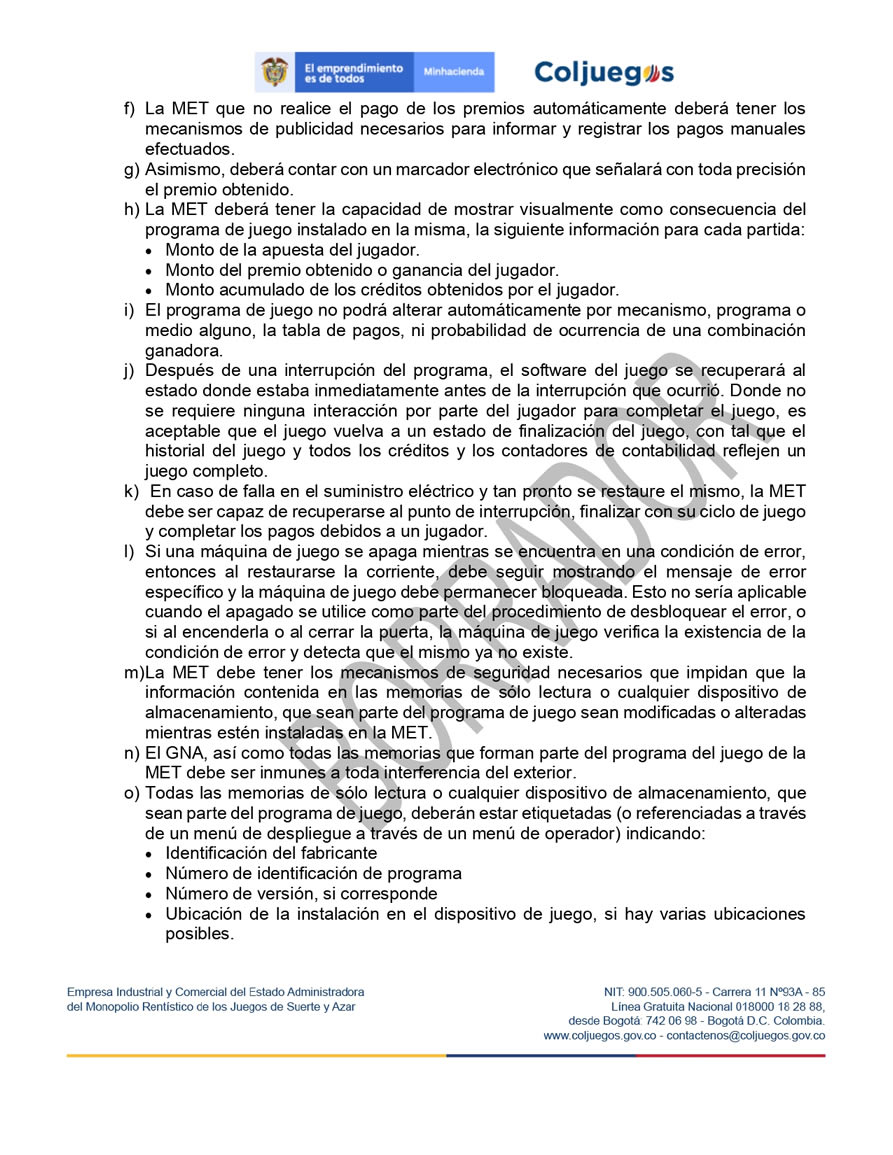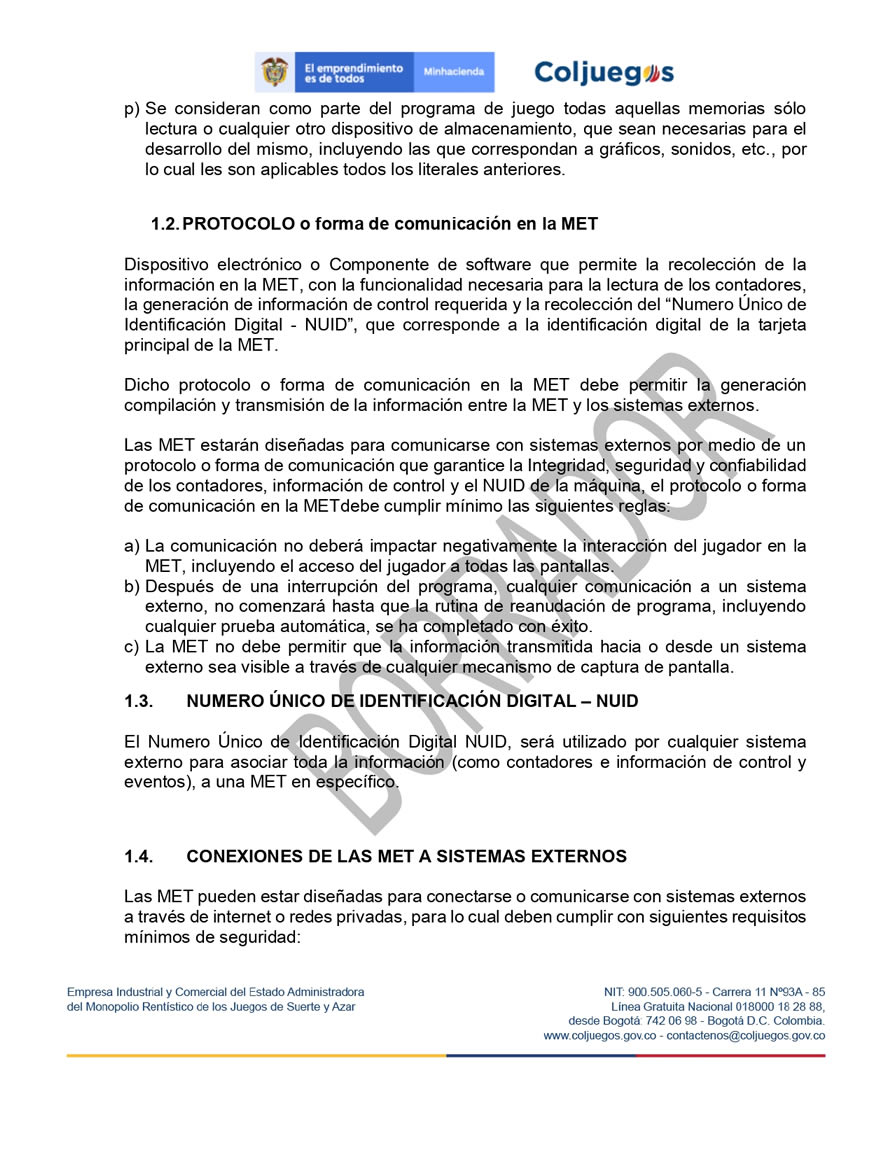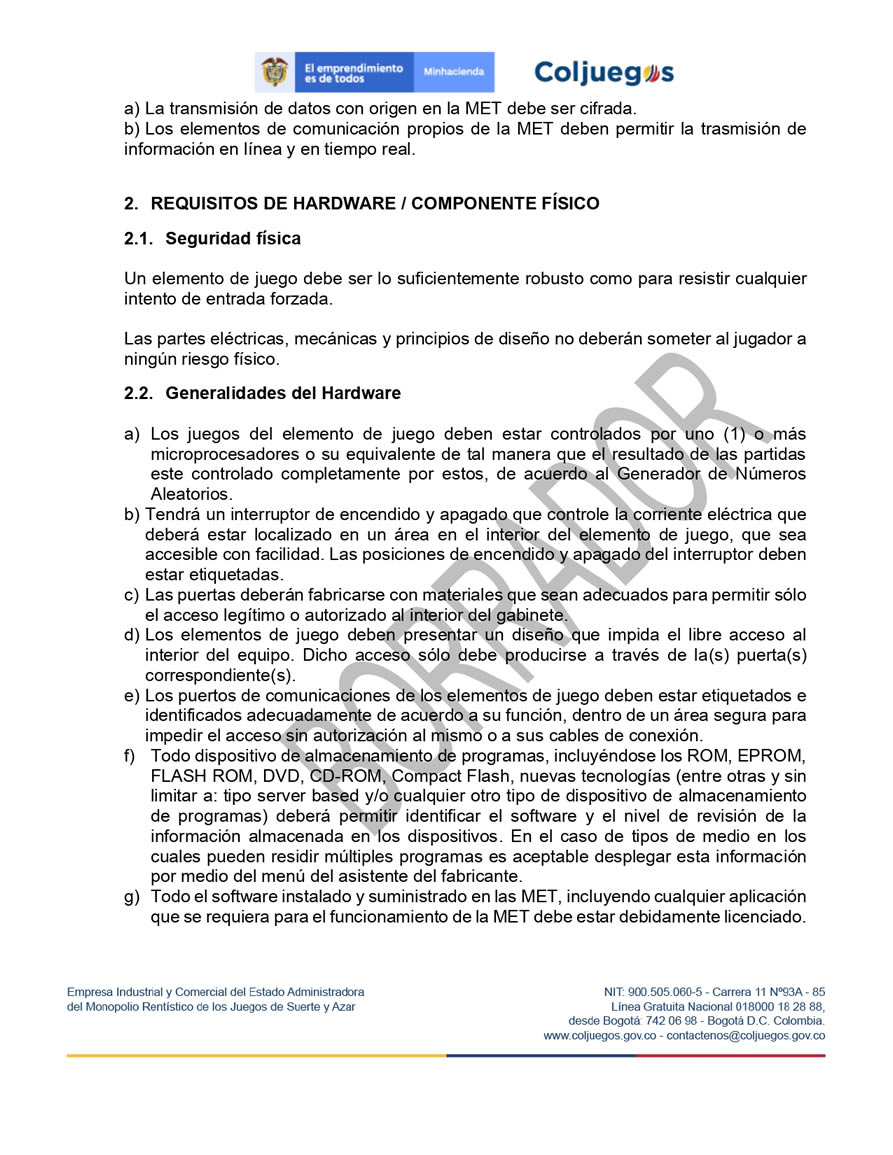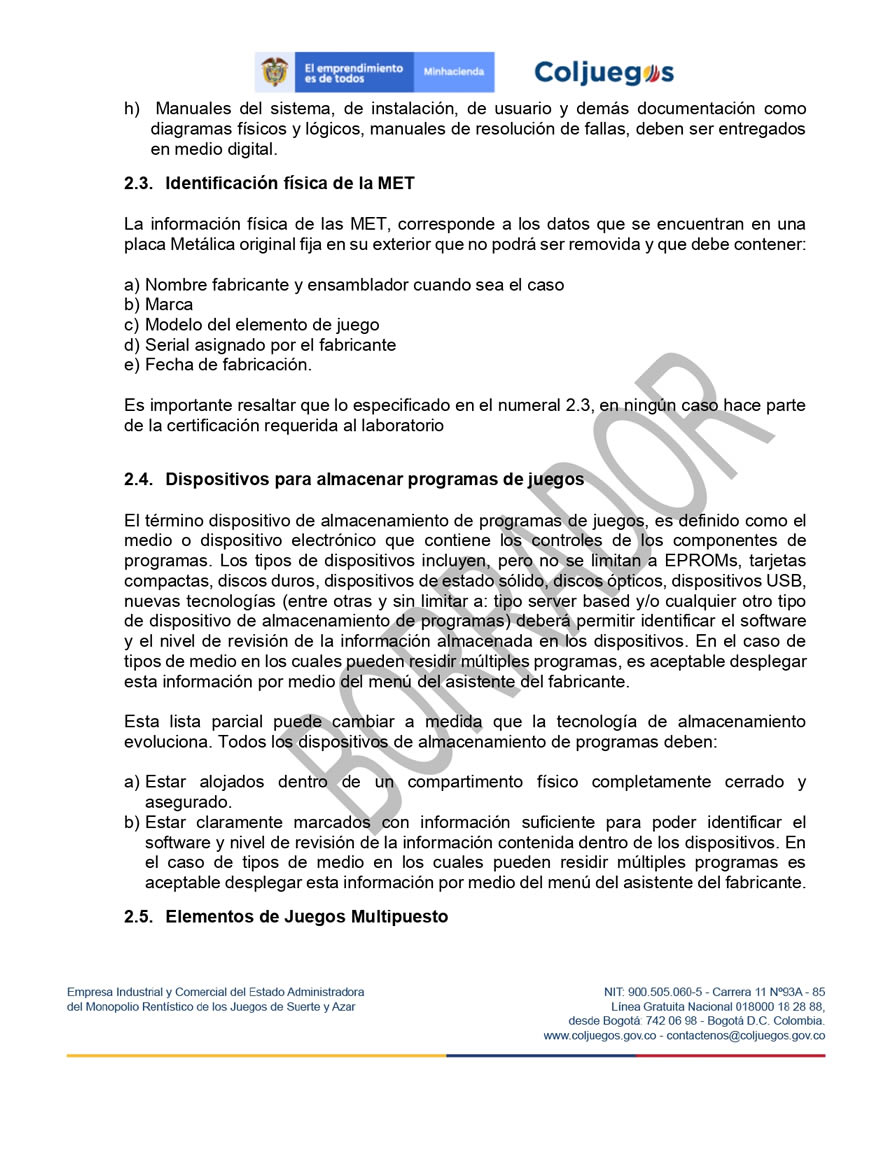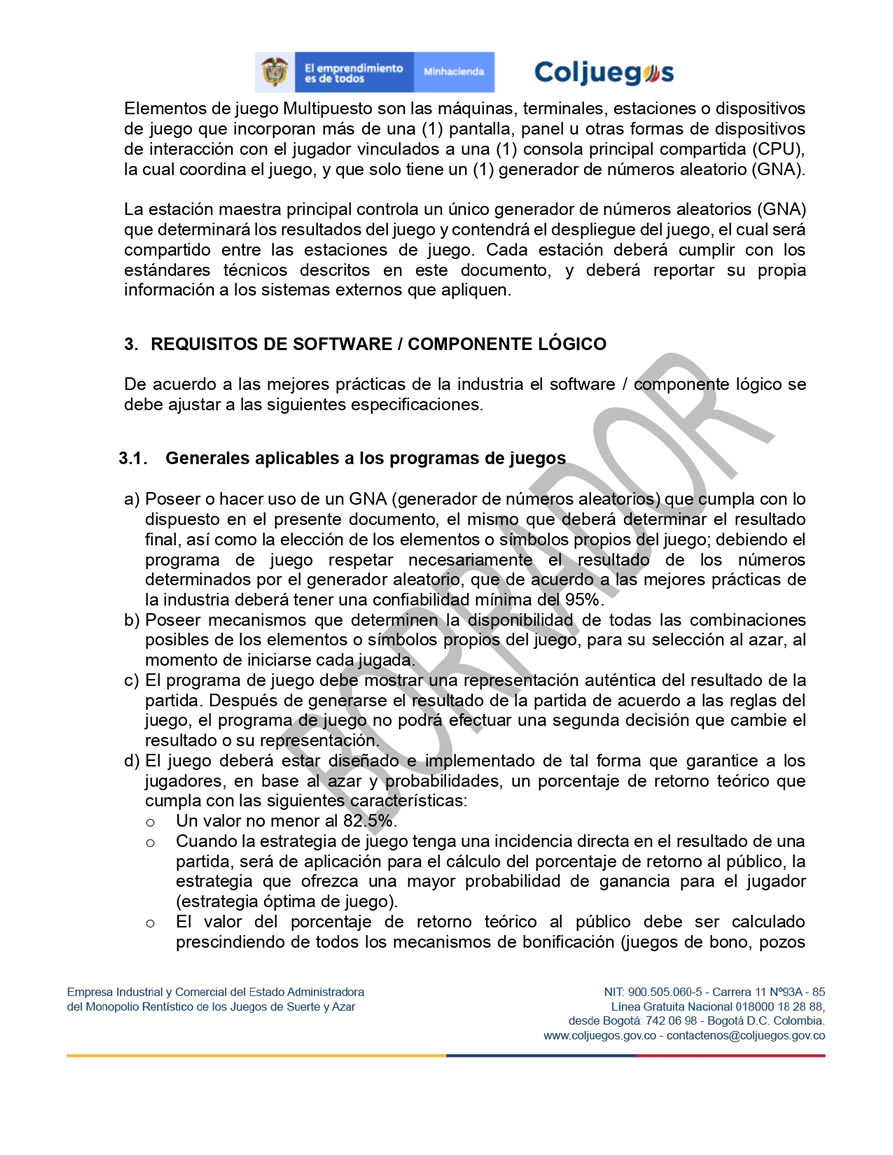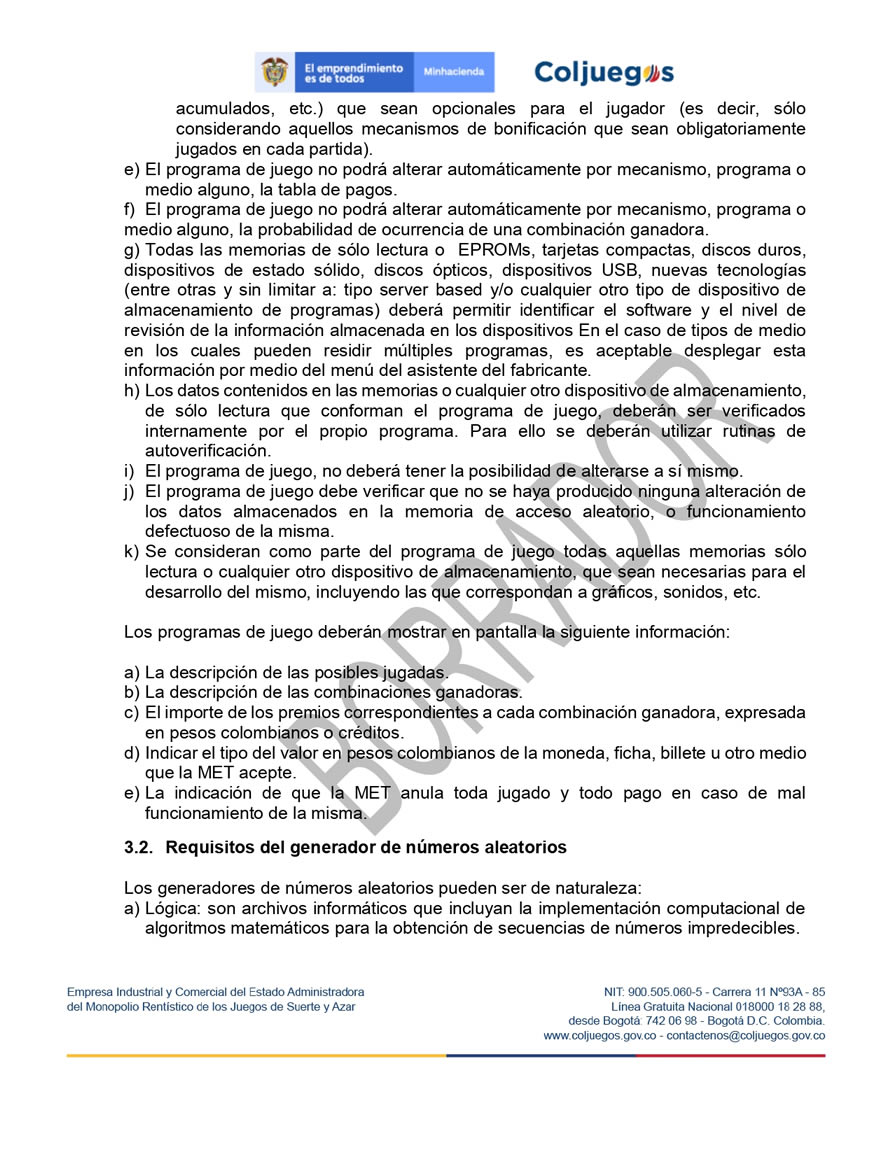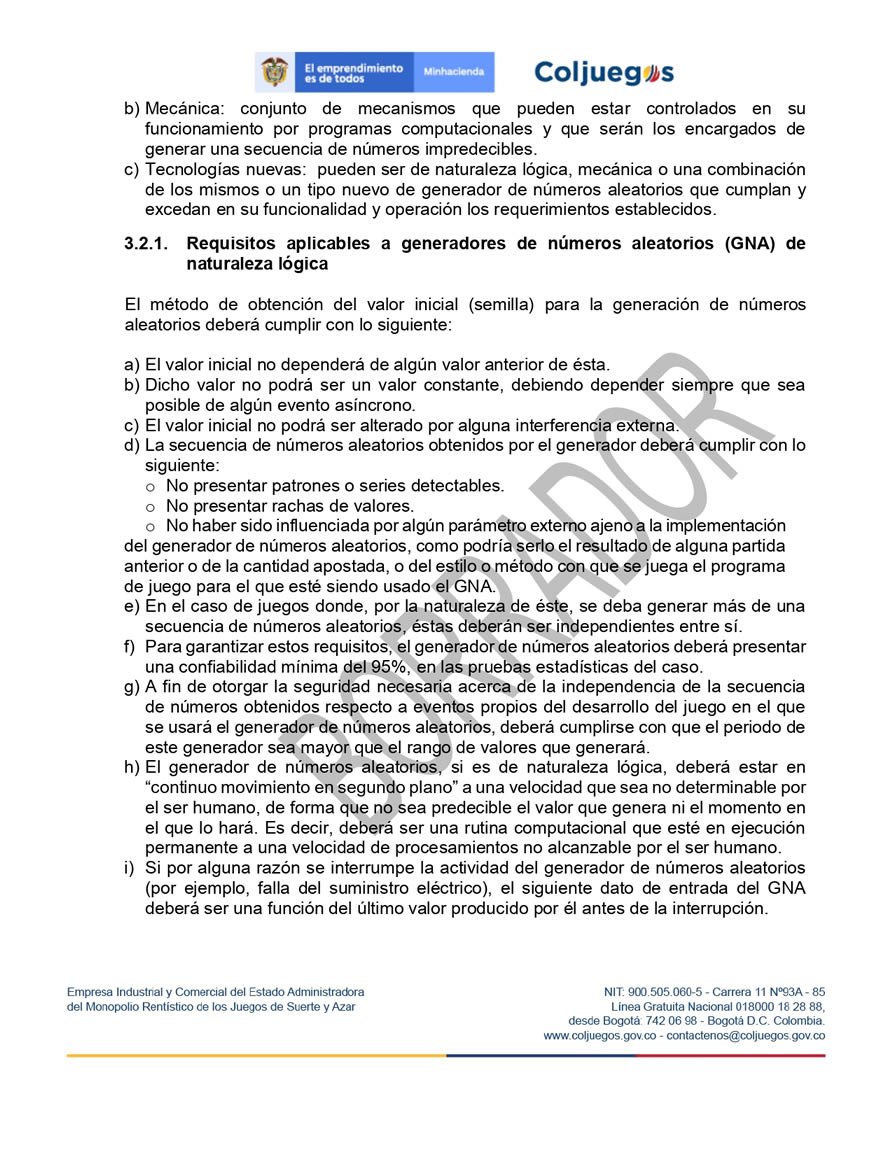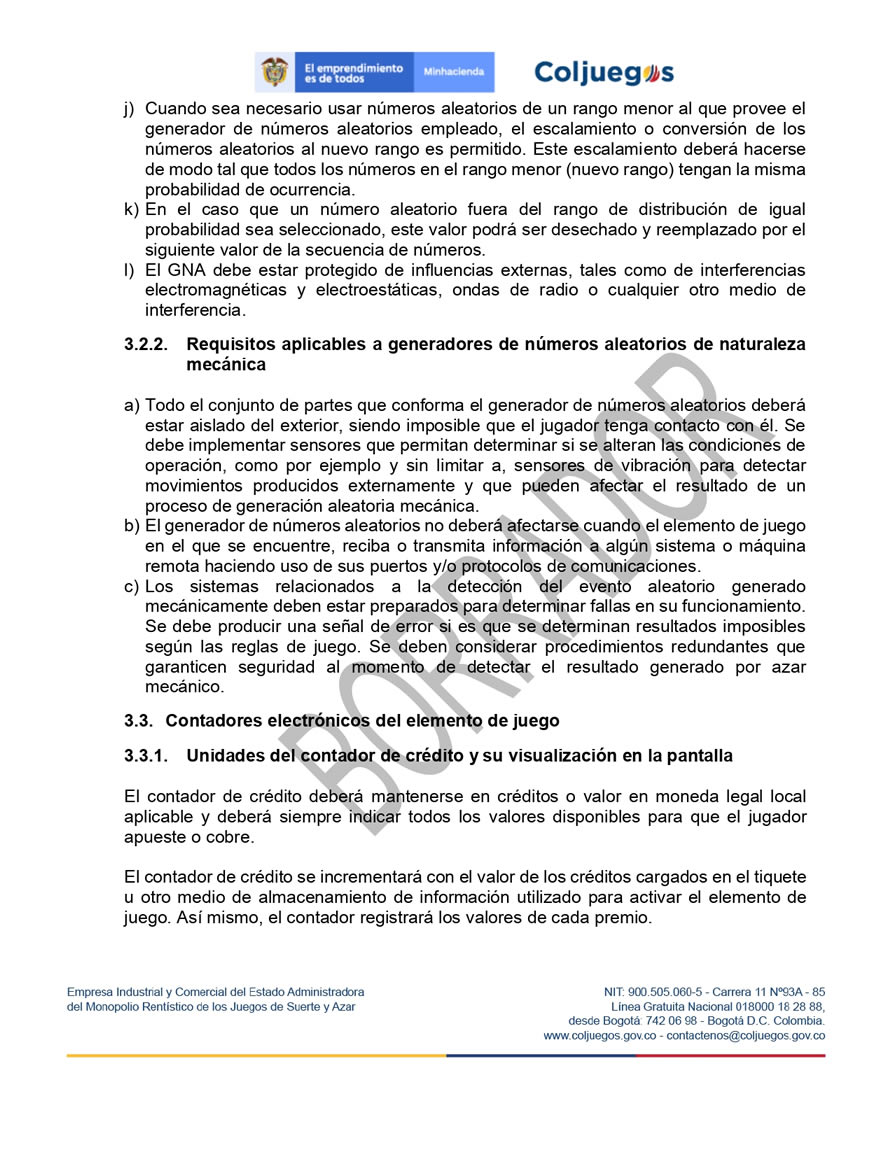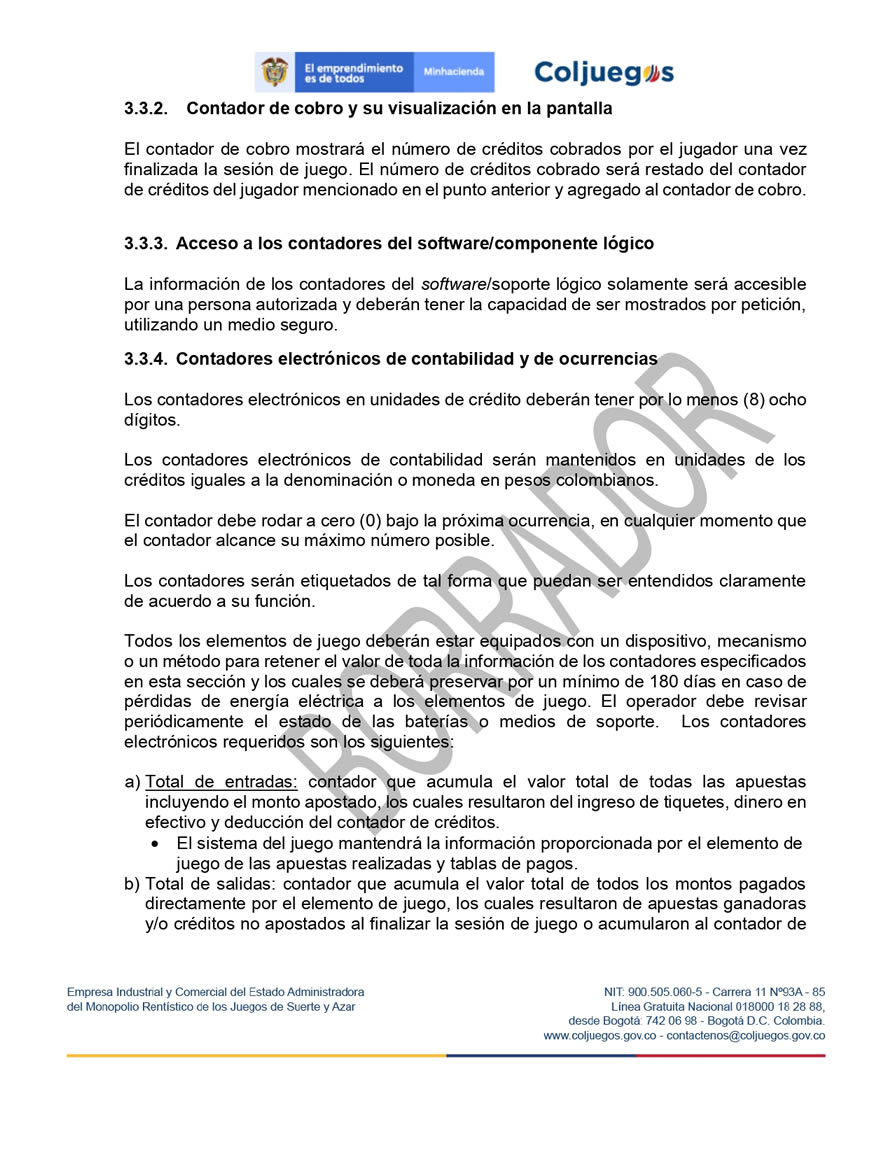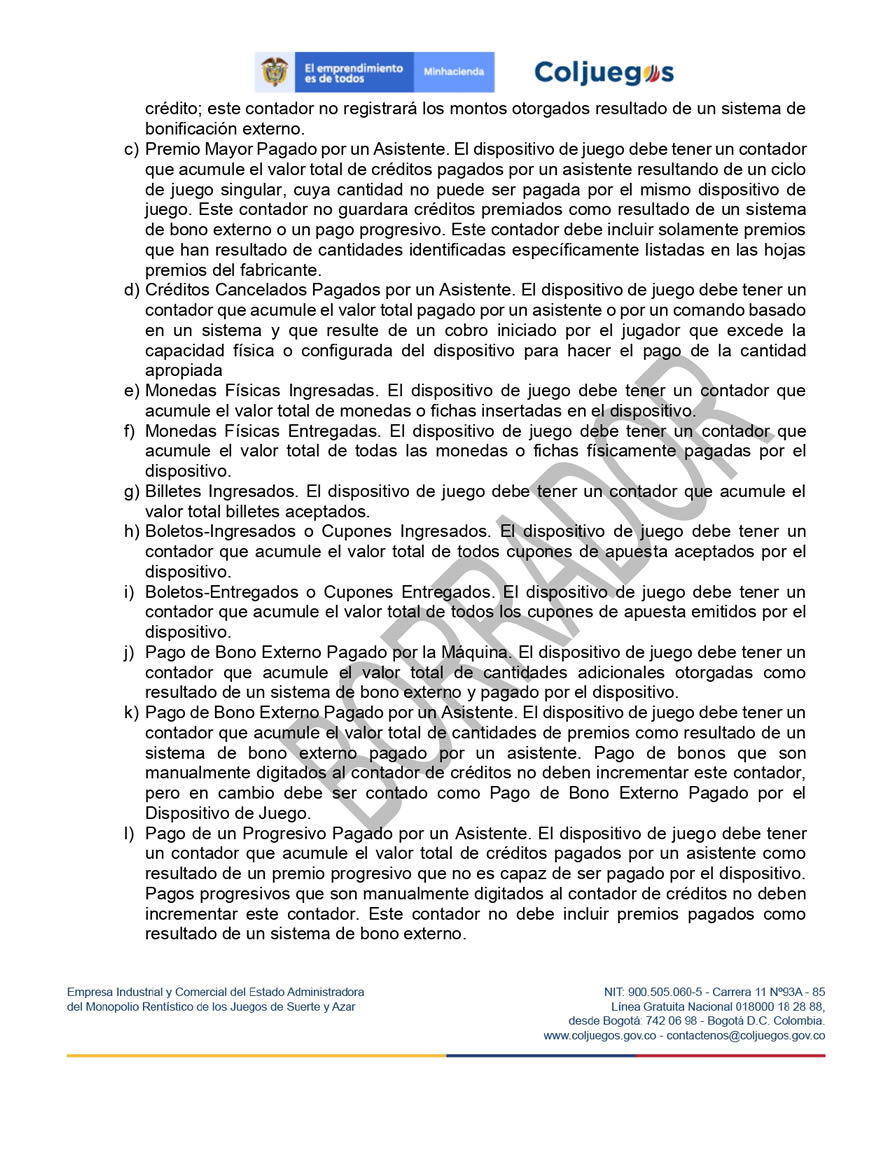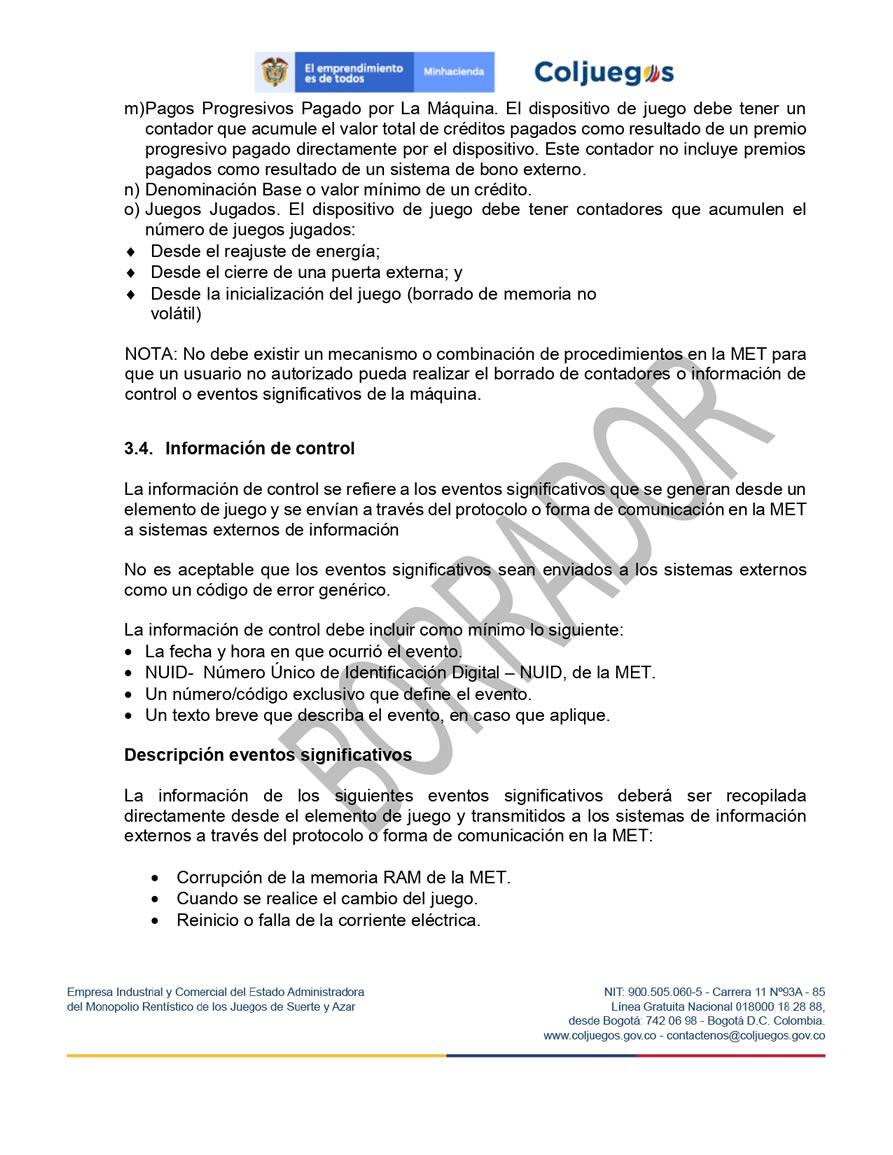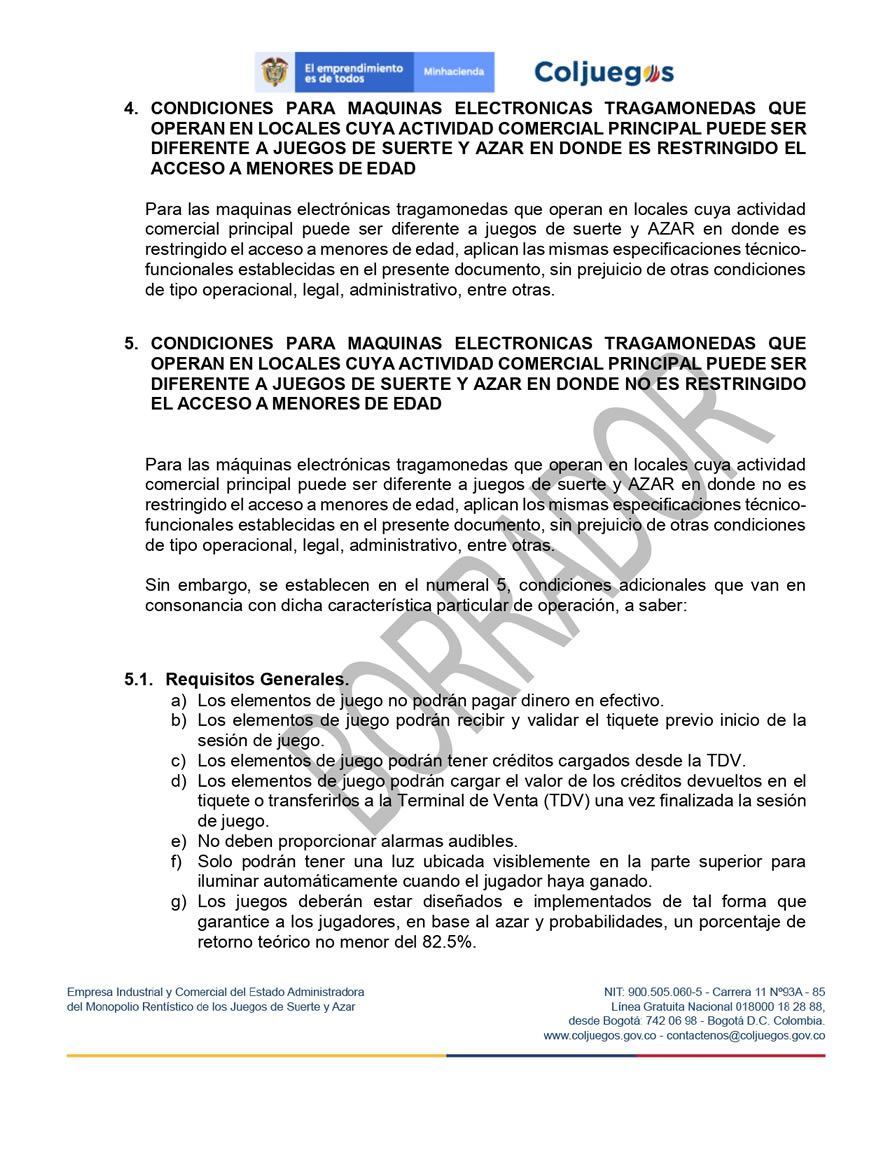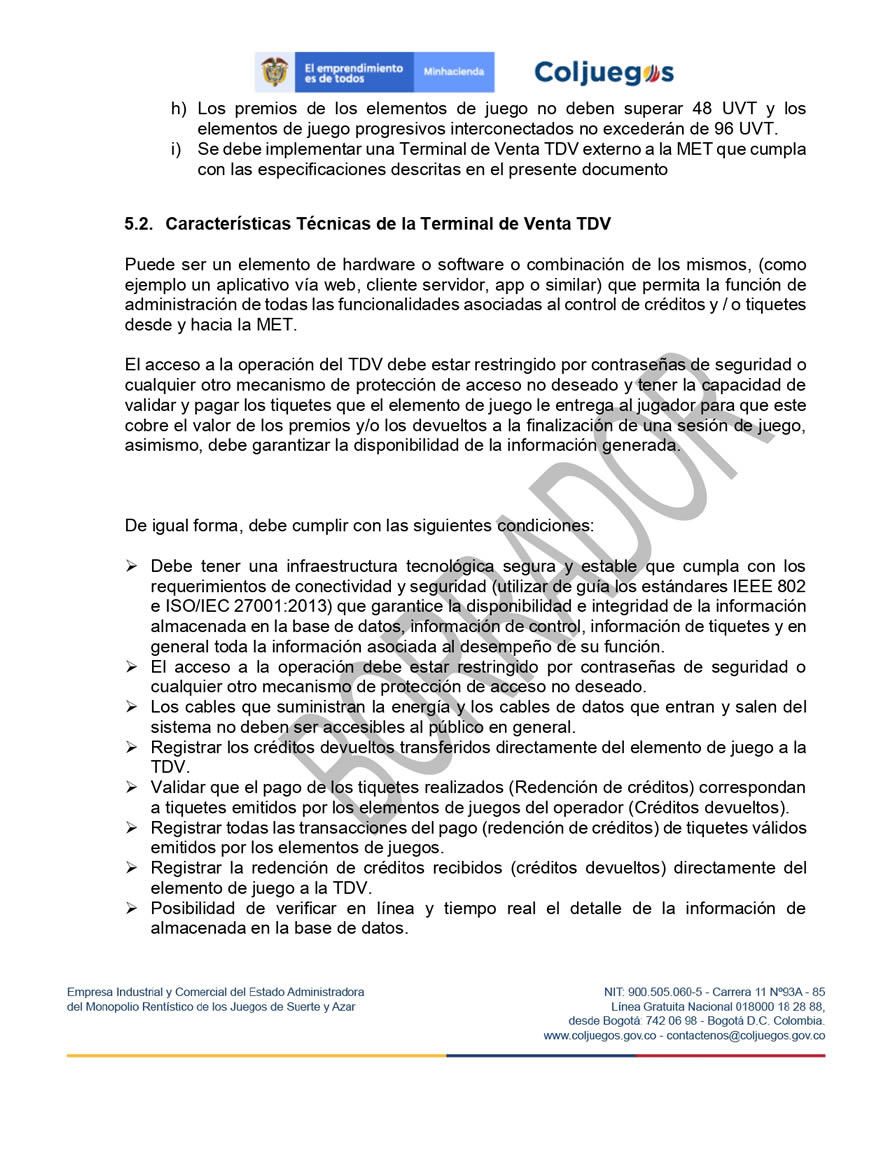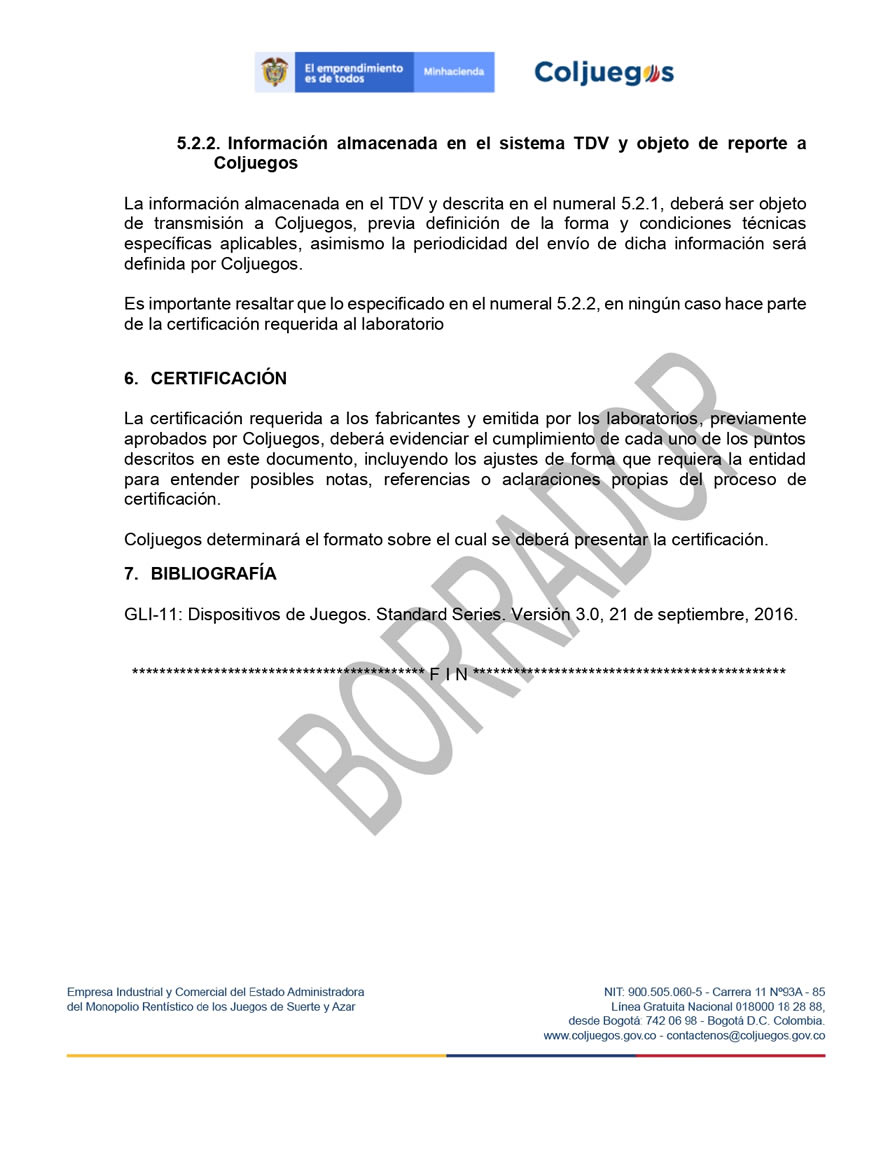Slot´s homologation. Coljuegos has published on its page the second document on the technical requirements of slot machines, which was born after the technical tables that were held with operators, laboratories and manufacturers.
Among the novelties of this document, are the TDV Sales Terminal that can be an element of hardware or software or combination thereof, (as an example an application via web, client server, app or similar) that allows the administration function of all the functionalities associated with the control of credits and / or tickets to and from the slot.
From this element, the regulator asks that the information of the operator, of the ticket issued by the operator's games element and of the transferred credits be transmitted.
In addition, For electronic slot machines that operate in premises whose main commercial activity may be different from gambling and where access to minors is restricted, the same technical-functional specifications established in this document apply, without prejudice of other conditions of an operational, legal, administrative type, among others.
However, for those machines that will operate in premises whose main commercial activity may be different from gambling, where access to minors is not restricted, additional conditions are established that are consistent with that particular feature of operation, such as:
- Game items may not pay cash.
- The game elements may receive and validate the ticket prior to the start of the game session.
- The game elements may have credits loaded from the TDV.
- The game elements may charge the value of the credits returned in the ticket or transfer them to the Sale Terminal (TDV) once the game session is over.
- They must not provide audible alarms.
- They may only have a light visibly located at the top to automatically illuminate when the player has won.
- The games must be designed and implemented in a way that guarantees players, based on chance and odds, a theoretical return percentage of not less than 82.5%.
- The prizes for the game elements must not exceed 48 UVT (unit of tax value) and the interconnected progressive game elements shall not exceed 96 UVT.
A TDV Sales Terminal external to the SLOT must be implemented that meets the specifications described in this document
In this document it is observed that coljuegos really listen and abide by the comments of these technical tables, because in the new document the operators will not be responsible for certifying elements that are owed by the manufacturers. Continuing with the great changes of the second document presented, it is in the connection of the SLOT to external systems which reduced it to that the machines can be designed to connect or communicate with external systems through the internet or private networks, for which they must meet the following minimum security requirements:
a) The transmission of data originating in the SLOT must be encrypted.
b) The SLOT's own communication elements must allow the transmission of information online and in real time.
Among the generalities of the hardware, coljuegos stopped demanding that only the system, installation, user manuals and other documentation such as physical and logical diagrams, fault resolution manuals be delivered in Spanish. In addition, the following points were eliminated:
- “All the solution supplied, including all hardware and software components must be IPv6 Compatible, allowing the configuration (according to the indication given by Coljuegos) of configuration of native environments in IPv6 and Dual Stack IPv4 / IPv6, in case of if required, the certifications of the manufacturers that guarantee said operating condition must be attached.
- All hardware must support and support both IPv4 and IPv6 protocols. Similar behavior must be provided for both input protocols, output and / or performance data flow throughput, transmission and packet processing. IPv6 support can be verified and certified by the IPv6 Ready Logo certificate. Any software that communicates through the IP protocol must be compatible with both versions of the protocol (IPv4 and IPv6). The difference should not be noticeable to users. It should include the execution of tasks of, without limiting to hardware and software level configuration, tuning or tuning of operating systems and databases, stress tests, hardening, quality tests, comprehensiveness tests, synchronization tests, data transmission tests of the solution. among other.
- Electronic components: The electronic components required are
- The central processing units (CPU) and any device used as program storage.
- Electronic communications controller and components that house communication program storage devices.”
Read the Complete Document HERE IN SPANISH